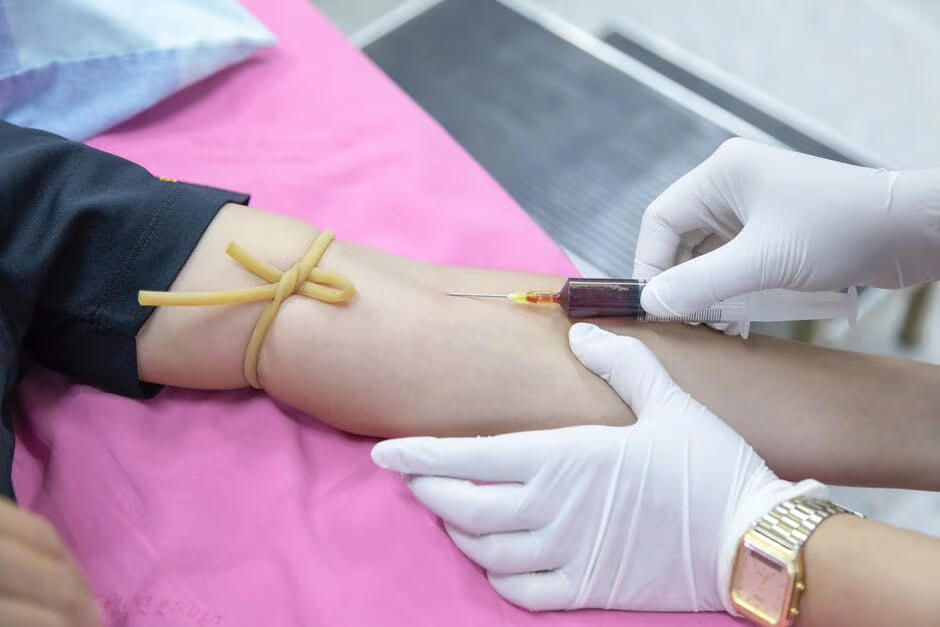Many people have taken an interest in joining the ranks of medical professionals in recent years. It’s becoming increasingly hard to find a steady job, after all, let alone one to feel proud of.
Many medical jobs require multiple years of intensive study and training, but that’s not necessarily always the case.
The path to becoming a phlebotomist isn’t as long as you might think, and it’s a position medical institutions are often in short supply of. If you’re asking yourself “How long is phlebotomy school?”, you’re in the right place.
Read on to find out how long it’s likely to take to become a certified phlebotomist and what you can expect along the way.
What Is a Phlebotomist?
Despite their unusual name, phlebotomists are among the most important and depended-upon people in the medical field.
In short, a phlebotomist is someone who has trained and specialized in drawing blood from patients. This is a necessary procedure for a broad range of reasons, including collecting blood samples for laboratory analysis and performing blood transfusions.
Primarily, phlebotomists prepare patients for blood collection and administer care throughout the process. This requires a good bedside manner, as patients will often be curious or wary about the process. Part of the job of a professional phlebotomist is to put the patient’s worries to rest by explaining the process and its particulars during the procedure.
The main attributes all phlebotomists share are a personable character, a calm nature, a steady hand, and a complete lack of fear when it comes to blood and needles. Phlebotomists are often practical people who understand the importance of their role and take pride in doing it well. Hospitals and medical centers rely greatly on the interpersonal skills of those they employ, and the profession of phlebotomy is no different.
If you’re good with people and enjoy the prospect of interacting with patients from all walks of life, phlebotomy could be for you. Much of what makes a good phlebotomist comes down to their personality and social ability, neither of which are taught in school.
If you think you’re the type of person who might excel in a fast-paced environment where patient care is paramount, you may already be ahead of the curve.
Primary Responsibilities of a Phlebotomist
Preparing patients for blood collection requires a lot more attention to detail than simply inserting a needle under the skin. Skilled phlebotomists must locate the most appropriate vein to draw blood from, which changes from patient to patient depending on their unique situation. This depends on a range of factors, from the type of sample required to the physical condition of the patient, and any potentially conflicting medical conditions they may have.
Selecting the appropriate vein is down to the discretion of the phlebotomist, it’s their job to determine the best site to draw blood from and they’re expected to do so without asking for assistance. This means ensuring patient safety and comfort as best as possible while using sterile techniques and equipment from start to finish.
They’re also charged with monitoring the patient’s condition and making a concerted effort to relieve any anxiety or discomfort they may be feeling.
In some cases, the phlebotomist might have to ask a second opinion of a doctor before drawing blood, depending on the state of the patient. Knowing when to do so is part of being a skilled phlebotomist.
Handling and processing drawn blood is also part of the job description. Each blood sample must be labeled correctly with the patient’s information and transported to the laboratory to be tested. Phlebotomists also assist where necessary in sample processing, doing jobs such as separating samples into their constituent parts and adding preservatives or anticoagulants to collected samples.
How to Become a Phlebotomist
Becoming a phlebotomist generally requires following a series of steps in order, each step facilitating the next. The first step is to obtain a high school diploma to prove a certain level of general competency, especially if the subjects you took are relevant. Subjects such as anatomy, biology, chemistry, and the sciences in general will prove a firm foundation for becoming a phlebotomist.
Once you have a high school diploma or an equivalent certificate, you’ll have a much better chance of being accepted into a phlebotomy training program. Phlebotomy training programs usually last between four and twelve months, depending on the institution you choose to attend. Phlebotomy classes can be found at most community colleges and vocational schools, as well as on the premises of some hospitals themselves.
These courses ensure students receive plenty of hands-on experience to complement the theory they must learn by heart. They also familiarize students with medical terminology, infection control procedures, and venipuncture techniques.
Classroom and real-world experience are viewed differently, however, and students aiming to become fully-fledged phlebotomists must gain genuine experience to be considered for accreditation. This is usually found through working entry-level positions and internships within the healthcare industry such as blood banks, clinics, and hospitals.
Finally, once these steps are met, the official phlebotomist certification exam will become available to you. It’s not mandatory in all states but comes highly recommended because it proves competency and will greatly assist you in finding a paid position.
Phlebotomist certification exams are available through various organizations, such as the American Society for Clinical Pathology and the National Healthcare Association.
Is Phlebotomy Hard?
Phlebotomy certification isn’t for everyone. Jobs within the medical profession are particularly taxing, emotionally and physically. There’s no telling what situations you may find yourself in, or how important your actions might be concerning the health of a patient.
Phlebotomy certainly isn’t an easy job. It requires a great strength of character to perform the duties required of you as a phlebotomist.
Learning the specifics of the human body as they pertain to the job is no mean feat to begin with. Then using what you’ve learned is another matter entirely. The skill is in combining theory with practice in a precise manner, all while going about your duties with an unshakable air of effortless personability.
While it might seem a daunting proposition at first to be in charge of piercing people with needles and extracting their blood, it’s a simple matter of understanding the human body. It makes perfect sense to feel a little anxious at the prospect, but familiarity with the procedure will soon fix that.
Experience greatly diminishes anxiety. As you progress and become more experienced, many of the tasks that seemed daunting to begin with will become second nature. The job of a phlebotomist is incredibly rewarding and a position to be proud of, the difficulty involved is part of what makes becoming a phlebotomist a goal worthy of the time and effort necessary to achieve the position.
Nothing worth having comes easy, after all!
How Long Is Phlebotomy School?
So, all in all, how long does the entire process take from start to finish? It depends on your current level of education, your drive to achieve the necessary prerequisites, and, of course, a little luck. If you’re starting your journey to phlebotomy accreditation straight out of school after receiving your diploma, you could be working as an accredited professional phlebotomist in as little as a year.
Much of the length of your training will depend on whether you’re looking for a full-time or part-time position as a phlebotomist. Full-time certificate programs usually take somewhere between four and eight weeks and require students to attend clinical training sessions for several hours each day, five days a week. Part-time programs will stretch the process over a longer time frame to accommodate people with existing jobs and responsibilities, often holding classes over the weekends or in the evenings.
Associate degree programs offered by colleges and universities provide a more comprehensive approach to the training required to become a phlebotomist. An associate degree program includes general education courses to supplement the student’s knowledge and experience so they’re better suited and prepared for their chosen role in the future. Through a combination of classroom instruction, clinical rotation, and laboratory practice, students are brought into the medical field in such a way as to bolster their confidence, allowing them to hit the floor running.
With a better understanding of the healthcare field in general, students who choose the route of an associate degree will have greater potential to advance their careers should they choose to do so. The caveat is that an associate degree typically takes two years to complete, compared to the eight weeks of a certificate program.
Is Phlebotomy for You?
The question of “How long is phlebotomy school?” is a difficult question to answer, as it depends on the position of the individual considering application. Some people will need to complete more steps than others. But don’t let that be a barrier to a worthwhile career in phlebotomy.
At Healthcare Career College, we’re fully equipped to transform our students into the certified healthcare professionals they aim to be, and we have been doing so since 1990.
If you’re still on the fence and would like to learn more, contact us today!



